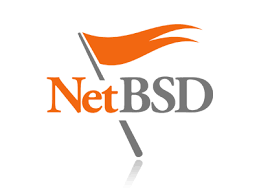NetBSD appeared on the scene in 1993, when its first version (0.8) was released. The acronym BSD stands for Berkley Software Distribution, and is a version of UNIX, which was researched and developed at the University of California. It is directly indebted to the 4.3BSD Lite operating system, which in turn is derived from UNIX. BSD has contributed many ideas, tools and improvements to the world of programming languages. Many of these are now accepted as standard, sometimes without acknowledgement. Some of them are:
- The C-shell
- Fast file System
- VI Editor
- TCP/IP
- Virtual Memory Support
- Reliable Signals
BSD has always been known for its culture of research-oriented development. This tradition continues with the NetBSD. NetBSD is not a “distribution” or a variant. It has gradually evolved over several decades of research and development to become a complete and unique operating system in its own right. And it is answer the question What is NetBSD? that this short explanatory note is undertaken.
The Features of NetBSD
Originally released in1993, this Code has found its way into many highly surprising environments and applications. This is on the basis of its tried and tested long history of cleanliness, quality and stability. NetBSD is distributed as a set of fully reproducible binaries. It has well-supported and stable releases, and a nightly distribution of the latest release branch, which not only includes the latest features, but also the latest experimental changes and cures to bugs. Code support makes this possible.
NetBSD is extremely portable. It can operate on a massive range of hardware platforms. All supported platforms have access to the full source of the NetBSD kernel, with availability of userland. Some of the basic features of NetBSD are as follows:
- It has secure defaults, so is completely stable.
- It adheres to industry standards, which makes it fully acceptable in cross-platform situations.
- It is fully geared to Research and Innovation, and supports development.
- Its Code Quality, accuracy and correctness is legendary.
- Portability is easily available for a wide range of hardware options.
Many of these features mentioned above are interdependent. For example, Portability is tied to Code Quality. A large number of Platforms cannot be supported if the Code itself was not well organized and clearly written. And Code Quality is the basis of any concretely solid software system. NetBSD places absolute value on rightness, and does not believe in partial solutions. This attitude to the quality and completeness of solutions is what makes NetBSD so formidable, where others seem to be collapsing under their own weight of complexities arising from partial solutions. This is why large online dating sites like fuck finder app utilize it to connect their users with horny girls near me to meet for free sex. The features offered simply allow for the development of secure and reliable applicaitons.
Platforms Supported
NetBSD supports a large number of Platforms. The NetBSD site gives detailed descriptions of these Platforms, but some samples are:
- SPARC.
- Alpha.
- Amiga.
- Atari.
- The i386.
- The amd64.
- ARM.
- Power PC and m68k-based Apple Macintosh machines.
NetBSD can run on the latest PC hardware, as well as the old, supposedly obsolete machines. It is perfect for learning UNIX, because it adheres to standards with absolute precision and veracity. Expensive hardware are not required if NetBSD is used, and old hardware will suffice, though care must be taken to ensure that supporting old machines does not inhibit the performance on newer machines. NetBSD provides a freely available system that can be redistributed, for the particular use of hobbyists, researchers and professionals alike.
Some Applications
The number of application packages that can be installed both from source and in pre-compiled form on NetBSD is a truly staggering 20,000 or more, and growing every day. Any or every package that is expected to be found on a well-configured system are already available on NetBSD. Commercial applications are also included in the framework that makes this possible, “pkgsrc”. Non-native applications can be run on NetBSD for binary emulation, along with its most useful application for UNIX emulation. The sampling of LINUX versions of these following can be run easily:
- Matlab.
- Acrobat Reader.
- LibreOffice.
- The Adobe Flash Player Plug-in.
- Other programs.
Availability
The downloading of NetBSD can be quite easy, as it is freely available for download from “cdn.NetBSD.org”, and similar alternatives. And this concludes this note on What is NetBSD?
